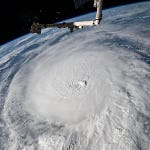I began my career when hopes for an orderly transition were at their highest.
My journey began in the early 90s what I took up work as an environmental journalist. The hopes of that moment — when the Berlin wall had fallen, apartheid was crumbling, and the idea of free and peaceful societies spreading over the Earth seemed just maybe to be within our reach — were focused most of all on the 1992 Rio Earth Summit.
At Rio we heard the first strong iterations of a general plan which everyone reading this newsletter is likely familiar with:
The goal was strong international agreements, national policies and citizen-driven action around the world, that would limit pollution and destruction of the ecosphere to a level to which humanity could adapt, preserving key systems and spreading sustainable development to every person on earth.
Core to this plan was an emphasis on continuity. This was not about upheaval or revolution, or even moving at disruptive paces. We would be bold enough to stave off disaster but cautious enough to minimize unnecessary losses during the process of change. We could live our lives and change them in carefully cost-benefited ways, too.
The notion of an orderly transition so drives the entire field of climate and sustainability politics and business that most practitioners find it strange to even point out the model they’re working from. In the minds of hundreds of thousands of climate, sustainability, and environmental professionals, an orderly transition and success are synonymous.
Indeed, most of the disagreements within the debate are only about how best to achieve the orderly transition: should we emphasize taxes or incentives, individual change or systems design, acceleration of innovation or anti-capitalist degrowth?
Even some of the most extreme parts of the debate — about say, geoengineering or so-called negative emissions at a massive scale — are usually just framed as ways of delivering an orderly transition under extreme circumstances.
The idea that continuity will be preserved has become an essential fiction.
An unquestioned belief in continuity allows us to go on doing the same things, in the same ways, avoiding disturbing questions about what we ought to be doing when the natural systems we depend utterly upon begin changing at unprecedented speeds. The orderly transition lets us focus our attention on making money and enjoying our lives while we ignore the news of shattering ice sheets, rising seas, and monster storms.
The only problem is that the orderly transition is now impossible.
“COP 26,” I said in podcast at the time, was “where the Orderly Transition went to die.” Well, COP 28 was where world leaders gathered to prop up the deceased and pretend it yet had life, like some ghastly diplomatic Weekend at Bernie’s.
Many extremely well-informed observers now believe that the goal of limiting warming to 1.5ºC is lost, and that even 2º is teetering on the razor’s edge. Estimates of how hot we’re likely to let the Earth get vary, depending on assumptions, but the common guess is around 2.5ºC, unless we experience a massive increase in the speed of action.
What’s true for global warming is true across an array of interconnecting and mutually accelerating ecological problems. The planetary crisis is much, much more than the climate crisis alone. Because every one of our lives is completely woven into the fabric of nature — no matter how distant we have deluded ourselves into thinking “nature” is — massive transformations in the world around us mean fundamental destabilizations of the systems we depend upon to live and work in safety.
The consequence of having moved too slowly to win an orderly transition is that we now live in an era of discontinuity — a break with previous realities. The continuity we continue to base all our plans on is gone.
And we are just at the start of this new era. The world we inherited is no longer suited for the planet we’ve made. There is a massive gap between the way things work now, and the way they would need to work to thrive amidst intensifying disasters, accelerating uncertainties and societal disruptions. This readiness gap is the most salient reality of the planetary crisis.
It’s not the end of the world but it is the end of an era whose worldviews and assumptions almost all of us still take for granted.
When an orderly transition seemed possible, we could imagine climate action and sustainability as correctives to a system which otherwise was working pretty well. We might need to drive electric cars, recycle more or build the river levees a little higher, but basically life in the future would be just a greener version of life as we knew it then.
This has changed. I see a few major ways that change is now likely to play out.
Cutting emissions is still absolutely critical to every person’s life, prosperity and hopes. Because it’s so critical, every increment of harm we can avoid is worth avoiding. A world that has heated by 2.3°C is still a more hopeful world than one that has been heated by 2.5° Celsius.
It’s not that the need to cut deeply into destructive practices is growing any less urgent — quite the opposite — it’s that in delaying change for so long, we have given birth to an even larger set of challenges that are even more urgent. Sustainability is now a problem nested inside the much larger context of the non-negotiable need to respond to planet-wide discontinuity.
But the ways we ready our world for the changes we’ve unleashed — what we’ve sometimes called adaptation, or resilience, or future-proofing — have collapsed as answers to the actual realities we face.
Listen to this episode with a 7-day free trial
Subscribe to The Snap Forward to listen to this post and get 7 days of free access to the full post archives.













